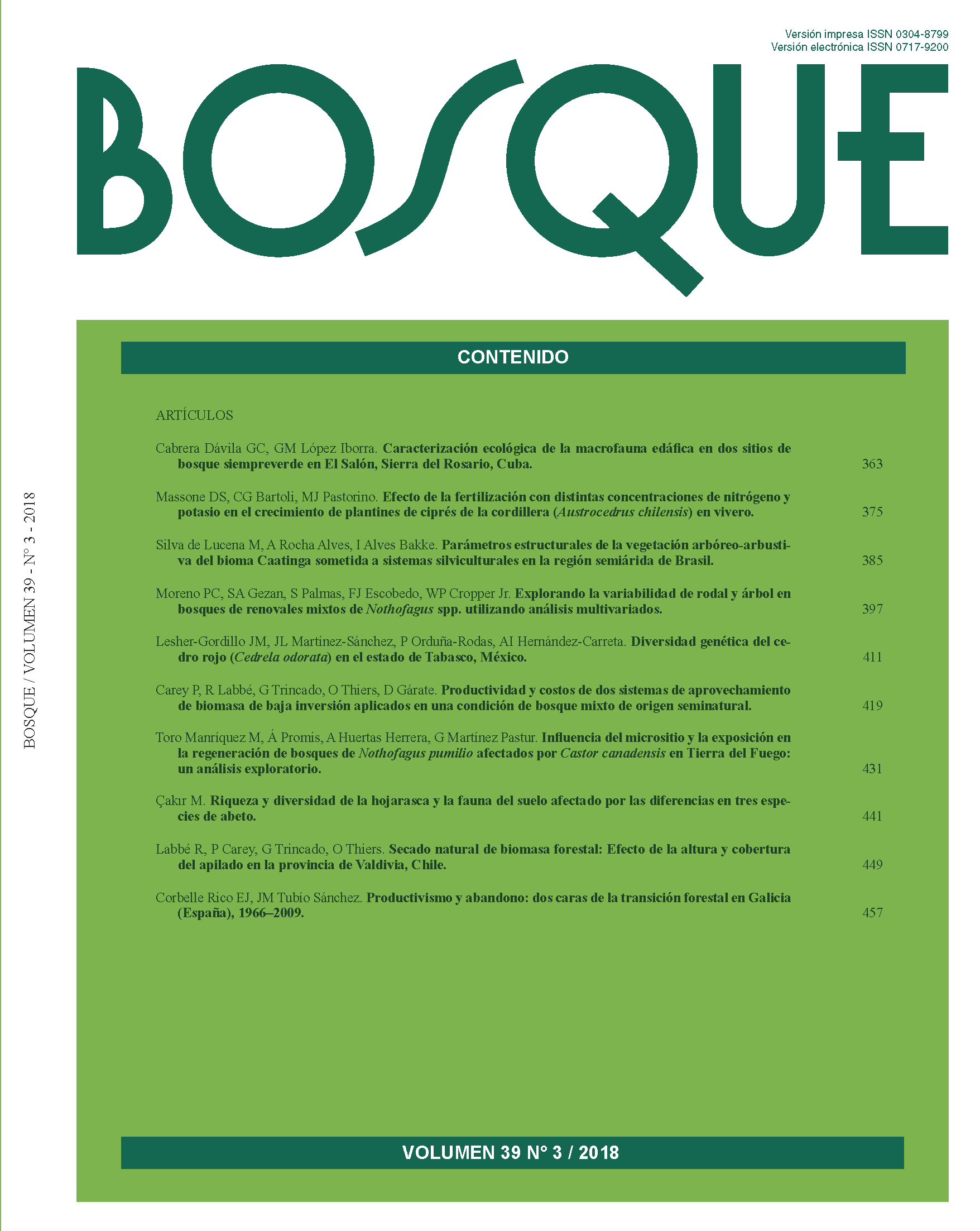Explorando la variabilidad de rodal y árbol en bosques de renovales mixtos de Nothofagus spp. utilizando análisis multivariados
Contenido principal del artículo
Resumen
Los bosques de renovales de Nothofagus obliqua (roble), N. alpina (raulí), y N. dombeyi (coihue), conocidos como el tipo forestal RORACO, es uno de los más importantes bosques nativos mixtos de Chile. Varios estudios han identificado un amplio rango de factores que influyen en la variabilidad a nivel de rodal y árbol encontrada en estos bosques. Este estudio, contribuye a una mejor caracterización potencial de los factores de árbol y rodal que están asociados con la variabilidad de los bosques de RORACO, y que son obtenidas desde inventarios forestales tradicionales. Varios métodos estadísticos no supervisados de análisis multivariado fueron evaluados: 1) análisis de escalado multidimensional no métrico (NMDS), 2) análisis de coordenadas principales (PCoA) y 3) análisis de componentes principales (PCA). La base de datos de este estudio está sustentada en una muestra de 158 parcelas formada a partir de dos redes de parcelas para toda el área geográfica del tipo forestal RORACO en Chile. Nuestros resultados indican que la productividad de sitio y zonas de crecimiento no explican considerablemente las diferencias encontradas en esta población muestreada. Sin embargo, el estado de desarrollo del rodal, la competencia individual árbol a árbol, y los atributos de tamaño de árbol, son variables críticas, con un alto porcentaje de la varianza explicada usando PCA, alcanzando un rango de entre 61 % a 67 %. Además, para el análisis de PCoA, la variable de densidad del rodal es importante con un ~78 % de la varianza explicada.

